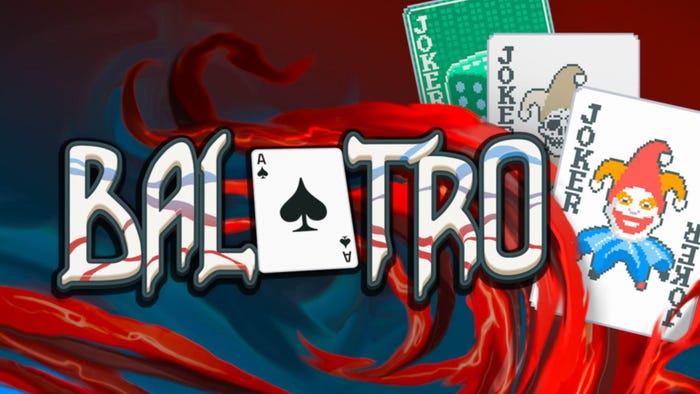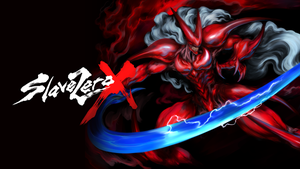Opinion: What Makes a Horror Game Truly Scary?
How have different survival horror games created fear over the genre's complex history? Gamasutra examines the diversity of terror in key games such as Silent Hill, Resident Evil and Condemned.

[How have different survival horror games created fear over the genre's complex history? Writer and commentator Nayan Ramachandran examines the diversity of terror in key games such as Silent Hill, Resident Evil and Condemned.] Horror games have had an interesting, if not bumpy, past. The last 20 years has seen the genre develop, die suddenly, return to life like a zombie, and escalate to mainstream proportions, surpassing even horror movies as the hair raising entertainment medium of choice. My first experience with the horror genre was on the PC, with Hugo’s House of Horrors: an adventure game that had its tendrils primarily wrapped around the pillar of horror, no matter the snippets of humor that managed to rear its ugly head. Since Biohazard’s success in almost every territory (and its revival of a genre that died unceremoniously in the West after the release of the original Alone in the Dark), numerous competitors have tried to copy, emulate and outrun it. Later still, in hopes of serendipitously stumbling upon a nugget of innovation, developers began to eschew "survival horror" conventions in favor of either the more accessible, or the more obscure. Each has touched on different elements of fear and terror, sometimes overlapping with each other, and sometimes even being at odds. What truly makes a scary game, though? What have the successful few done to overcome that perilous hurdle that seems to trip up so many? There are the most obvious ones that all horror buffs cite as the most important agents of fear: the unknown, and frights. Fear Of The Unknown Possibly the most obvious horror element, the unknown is used to keep the player guessing and their mind going wild. Often times utilization of only a fraction of the player’s senses can trigger fear. Being visual creatures, humans are most comforted by sight because of our ability to discern objects, action and consequences based on a picture. As a result, cutting visual stimuli and sticking purely to audio or speech is one of the best ways to keep a player on their toes. Even with weapons, it’s very hard to find what you cannot see, and what you do not know. Even if visual stimuli is used, limiting or obfuscating the player’s view can enhance the horror in a game, especially if the player sees it for an incredible short time. This can hint both at the difficulty of an upcoming encounter, or even allude to matters earlier in the narrative that the player will soon have to face. Scared Out Of Your Skin Then there is the cheap scare. The infamous zombie dog jumping through the window in Biohazard 1 is not just memorable, but one of the hallmarks of the entire series (and perhaps horror itself). These unexpected occurrences, or fright moments, only seem to work once or twice before they become tired and irritating. Cheap scares work on the weak of heart, but the average horror gamer has cojones of steel and expects monsters to jump out of dark corners. These types of scares are the bottom of the barrel. Games still use cheap scares at times, but often use it to great effect by dashing a player’s expectations. One particularly memorable example is the original Silent Hill. When the player first visits the elementary school and encounters the lockers, there is a thumping sound coming from a single locker. When you open the locker, a cat jumps out and runs away. When you return to the locker again in the dark world, the same locker is thumping from within. Whispering “fool me once…” to themselves, the player opens the locker again to find…nothing. The locker is totally empty. Strangely, this absence of climax was more scary than a monster popping out. At least if a monster had jumped out, there would be a sense of climax and relief, but this lack of climax prolongs the hanging anticipation. What Are You Waiting For? This, of course, ties into another great element of horror that people often do not consider: anticipation. The only thing more terrifying than not knowing what to expect around the next corner, is having a vague idea of what it is. Condemned for Xbox 360 did this masterfully using complex AI, but it’s not always needed. Traveling through the darkness with just a 2×4, the player slinks through the darkness looking for enemies. Through the doorway ahead, a single lamp hangs, illuminating very little of the upcoming hallway. Just as the player approaches, a figure darts across. There’s no way to know what they’re armed with, or even who they are, but the player knows they are around the corner, waiting to pounce. Here, there are two schools of thought on horror. In more action-oriented horror games, the enemy would indeed be there, waiting to club the player to death with a lead pipe. In games that look to play with the player’s emotions, fears and anxiety, the enemy might not be around the corner at all. In fact, it could be a harmless figment of the player’s imagination, created to make the player question and harshly judge everything in the environment. Dazed And Confused This is why anticipation goes so well with the element of confusion. Playing with a character’s anticipation is not always entirely effective, especially if it’s consistent. The minute a player catches on to the fact that a given ghost or horrifying denizen of the game is no longer an actual threat, the player’s fears drop away like onion layers. Killing the vulnerable and unexpecting player after almost Pavlovian levels of forced repetition builds a ruleset of expectations in the player’s mind. “That enemy does not actually exist. Like every other time, it will just disappear, and I can continue with my game.” Imagine the player’s horror when, instead of disappearing, the creature finally turns towards the player, and slowly begins walking towards them, each tile and plant in the vicinity corroding and shriveling with the creature’s every step. Suddenly, the player’s known rules and expectations have been dashed, and no amount of quick planning is a match for pure, unadultered panic. This path is most effective in games where the player is armed with very little, or nothing at all. In games like Clock Tower or The Nameless Game/Nanashi no Game, where the main character is a normal, vulnerable character, with no way to fight off enemies permanently. Instead, they have to run for safety or hide. All that said, horror is still a very personal experience. Each of us has our phobias and insecurities, and a well done horror experience plays upon the most common among us. It’s difficult to create a horror experience that is tailored to each person, but many companies have done a fantastic job of making us want to lock our doors and cry ourselves to sleep. What makes you scared?
About the Author(s)
You May Also Like












